“Life is like a bowl of Maggi, it’s all about how you spice it up.”
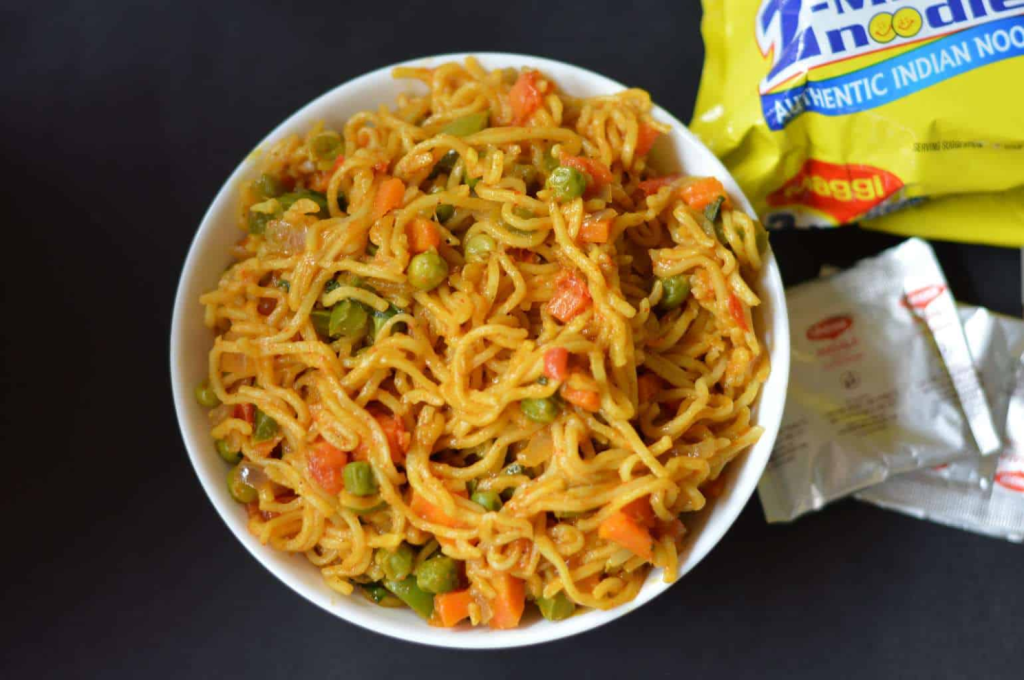
Introduction
Once, Warren Buffett said, “It takes 20 years to build a reputation and 5 minutes to ruin it.” The 2-minute-noodles brand understood this harsh reality after facing a ban by the Food Safety and Standards Authority of India (FSSAI) in 2015.
Back in 1983, noodles were an alien dish for Indians. Maggi took a bold bet and single-handedly created a Rs. 937 Cr market. It has maintained its position as the market leader for almost 38 years. Soon, brands like ITC, Unilever, and Marico ventured into the market, yet Maggi retained its dominance with a 75% market share in India.
However, the unfortunate ban imposed by FSSAI tarnished Maggi’s reputation within days, causing its market share to drop to as low as 42%. Nevertheless, for a corporate giant like Nestlé, the parent company of Maggi, staging a comeback is not unfamiliar.
Despite enduring a ban for five months, Maggi fought back to claim a 60% market share within the same year.
How did Maggi create a new market in India? What were the reasons for its ban? And how did it stage such a remarkable comeback?
Origin
Originally founded by Julius Maggi, Maggi started as a company that produced powdered soup mixes to provide a convenient and nutritious option for busy families. However, a significant turn of events unfolded due to a war in Japan, altering the trajectory of Maggi’s story entirely.
Momofuku Ando, the visionary behind Nissin, is the man behind the invention of instant noodles. During the post-war food shortages in Japan, Ando witnessed the long queues of people waiting for traditional bowls of noodles. Through extensive experimentation, he introduced instant cup noodles in 1971, a groundbreaking innovation that garnered widespread acclaim.
Nissin rapidly expanded its reach to other countries, maintaining its success across diverse markets. Presently, Nissin boasts a remarkable 50% market share in Japan’s instant noodle domain.
Meanwhile, Nestle keenly observed both the product and its market dynamics. Recognizing India’s potential as a lucrative market, Nestle took a bold step in 1983 by introducing Maggi noodles.
The Rise:
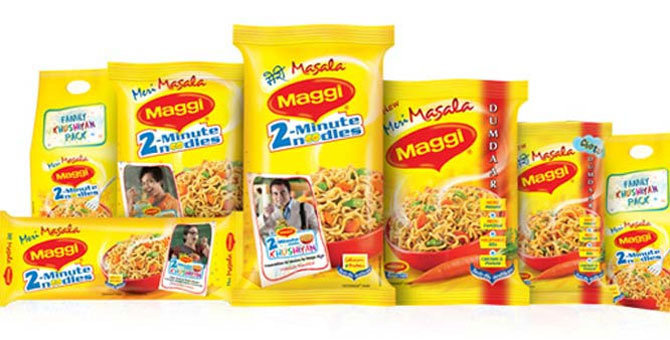
In the early days, Nestlé faced challenges getting Maggi onto Indian store shelves. They turned to market research, their strong suit. They discovered that in a country like India, where food habits are deeply ingrained, instant noodles seemed an unlikely choice for consumers.
Maggi wasn’t just competing with other products; it was up against traditional eating habits of consumers.
Despite this hurdle, Nestlé didn’t give up. They identified a gap in the market: a demand for snacks between lunch and dinner. Initially targeting working women, Nestlé soon shifted focus to working mothers as customers and children as consumers.
Do you remember those old Maggi commercials? Kids rushing home from school for a steaming bowl of Maggi, embracing their mothers over the snack. Positioning Maggi as easy to cook and good to eat paid off.
By the late 1980s, Maggi had become a household name and dominated the instant noodles market in India.
What Colgate is to toothpaste, Maggi is to noodles in India.
By the early 2000s, Maggi had firmly established itself in urban homes, claiming about 90% of the market share. Soon, Nestlé expanded distribution to rural areas and introduced new flavors and products, boosting sales and reaching more customers.
Soon enough, Nestlé was selling 2.2 million packets of Maggi daily. Maggi became a significant revenue source for Nestlé, contributing up to 30% of its total earnings.
Then came the nationwide ban imposed by FSSAI. For a brand that had led the market for over 3 decades, it was a sharp decline. Maggi’s market share plummeted from 80% to just 5% in a month, marking its first loss in three decades.

The Fall & Comeback
The 2015 Crisis and Its Impact on Maggi
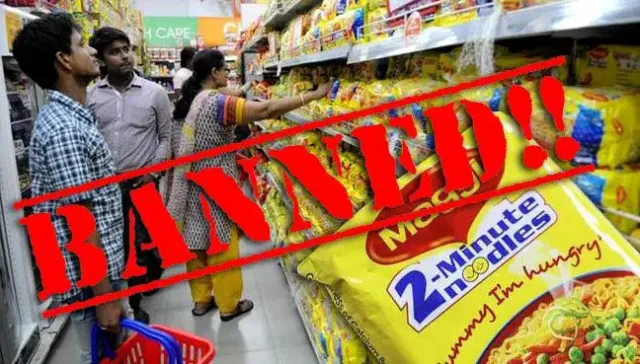
During routine tests by the FSSAI, they found higher levels of lead and MSG (monosodium glutamate) in Maggi noodles. Lead, a heavy metal, can be harmful to health, especially if consumed in large amounts over time. MSG, though generally considered safe, was detected in quantities that exceeded the limits set by Indian regulations.
This discovery sparked nationwide controversies. Despite being a global leader for years, Maggi was taken off Indian shelves for nearly five months.
After conducting tests, making adjustments, and negotiating with authorities, Nestlé reintroduced Maggi in late 2015. Losing trust in a popular brand like this was a serious concern in India, and Nestlé knew it needed to address it.
During the crisis of 2015, Nestlé invested heavily in public relations and advertising campaigns to regain consumer trust. One of their most successful campaigns was #WeMissYouToo.
They shared stories from fans who missed Maggi on social media, using captions like “Your Maggi is back,” “We Miss You Too,” and “Your Maggi is safe, has always been.” These messages resonated widely.
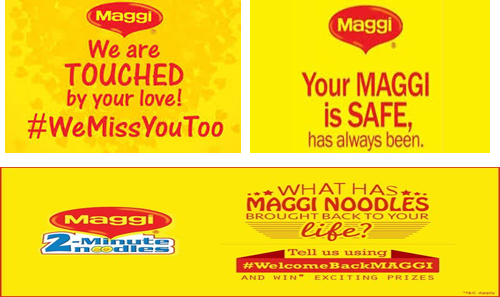
Hashtags such as #WeMissYouMaggi and #WelcomeBackMaggi trended during Maggi’s return, showing strong consumer engagement and positive feelings.
By the end of 2016, Maggi had reclaimed its number one position in the market, capturing a remarkable 60% share of the instant noodles market and selling 2 million packs per day.

In 2021, Nestle India achieved a significant profit of INR 1441 crores with revenues totaling INR 9373 crores. A substantial 30% of these sales can be directly attributed to Maggi. Thanks to Maggi’s success, Nestlé commands a dominant 60% share of India’s approximately INR 11,600 crore instant noodles segment.
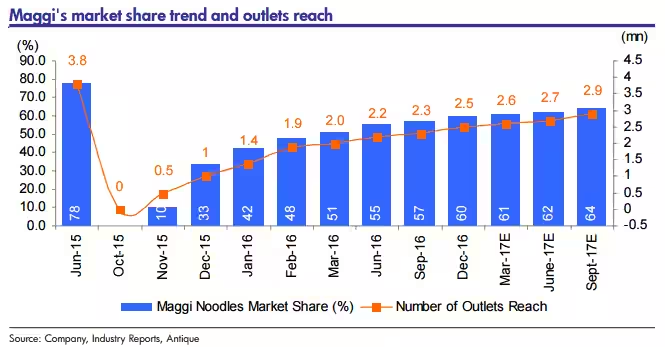
Know-How
- Customer segmentation: Although Maggi initially struggled to target the right customers, it quickly corrected its mistake. While children are the consumers, mothers are the target customers. Nestle understood that trying to sell to everyone means selling to no one.
- Right Market gap: Market research showed that Maggi couldn’t replace traditional Indian lunch and dinner options, but instead of giving up, Maggi found its niche as a convenient, tasty evening snack.
- First mover advantage: Recognizing the potential of the Indian market, Nestle took a bold step by introducing a completely new product. Despite challenges, Maggi enjoyed a first-mover advantage, maintaining its position for decades.
- Versatility of product: The product’s success was driven by its appeal. Nestle gave Maggi an Indian twist with spices, and once people started loving it, creativity soared, leading to many dishes using Maggi as a main ingredient.
- Creative commercials: Every detail was thoughtfully planned, from the yellow color that stimulates hunger to the font that is relatable to generations. Advertisements featured happy children and their mothers, and campaigns shared fan stories to build trust.
- Customer relationship: When faced with criticism, Maggi didn’t follow the usual path. Instead of being defensive, it accepted the feedback, made improvements, and came back stronger. It all paid off.
For more articles, visit Finshots Daily.
